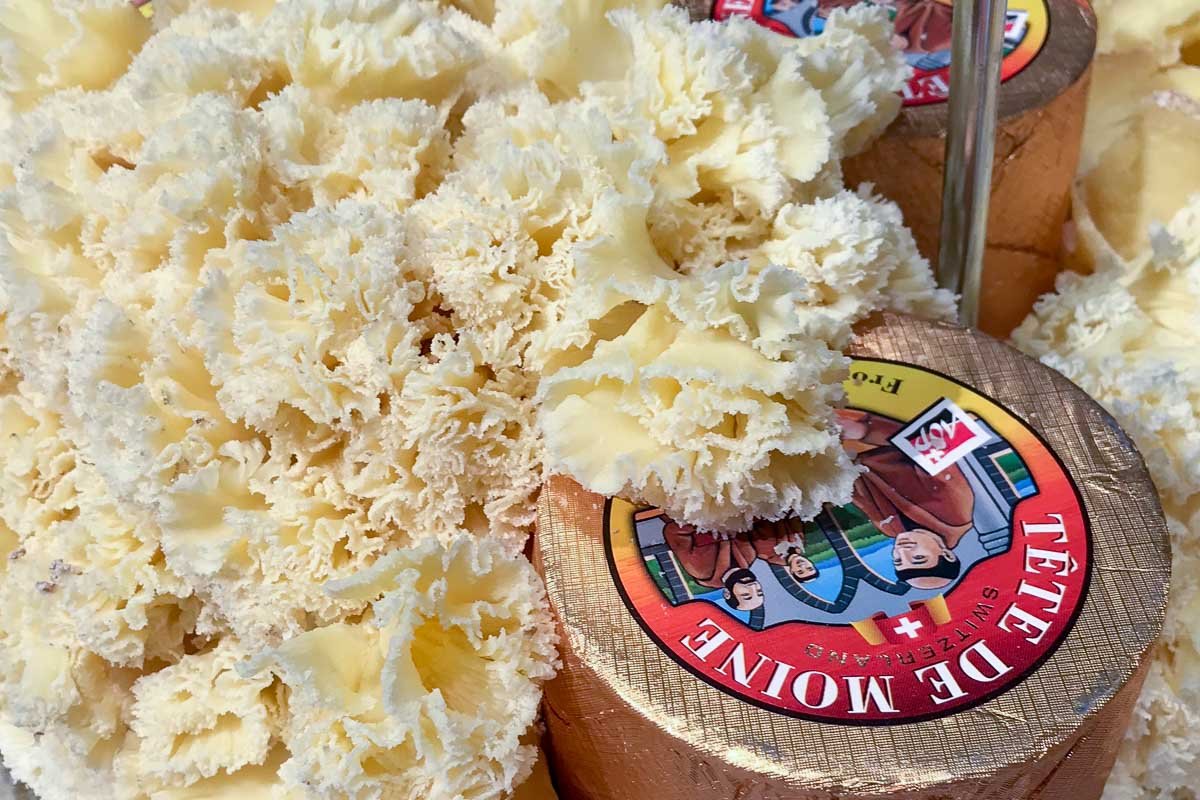After a nine-year absence, real Morbier is returning to American cheese counters. If you didn’t realize it was missing, that’s probably because multiple faux Morbiers have attempted to fill in the gap. The photogenic cheese with the ash ripple in the middle has been MIA since 2014, victim of the uproar we’ll call Ashgate. Thanks to our vigilant FDA, Americans have been protected for the past several years from a cheese that the French have been enjoying for two centuries. Are you ready to take a risk and eat some raw-milk Morbier again?
Read moreYour Raw-Milk Cheese Roster
The trend line for American raw-milk cheese is not what I wish it were. Over the past few years, we’ve seen a decline in the number of creameries producing cheese from unpasteurized milk, according to member surveys commissioned by the American Cheese Society. Cascadia Creamery’s Glacier Blue (above) remains among those cheeses made the traditional way, with milk at the temperature it comes from the animal. But the niche is shrinking.
Read moreCurl Up with This Cheese
The ruffles are eye-catching but you don’t need a special scraper to appreciate Tête de Moine. It’s a delightful cheese even when not curled into frilly rosettes. That said, I’m going to treat myself to a girolle—the shaving device—one of these days because, well, what a conversation stopper. The girolle’s Swiss inventor died four years ago, at 91, aware that his clever tool had sent sales of Tête de Moine soaring. Annual production is now 150 times what it was when his girolle debuted in 1982. I just listened to an old interview with the inventor and was charmed to hear about his lightbulb moment and be reminded of how good this cheese is.
Read moreThe Cheeses to Beat
Gourmino board: (l to r) Ur-Eiche, Emmentaler AOP, Bleu de Combremont, Le Gruyère AOP
The wins just keep coming for Gourmino. This Swiss marketing co-op has 13 cheesemaker members who seem to have a lock on the top prize at major international competitions. Last week, a Gourmino Gruyère prevailed at the World Cheese Awards in Wales, besting 4,433 entries. Earlier this year, a Gourmino Gruyère from cheesemaker Michael Spycher was named World Champion Cheese —for the third time. I can’t overstate how remarkable that is.
Read moreBefore You Travel with Cheese, Know the Regs
Fromagerie Laurent Dubois, Paris/Photo: Susan Sturman
Ever wondered what cheeses you can legally bring back from Europe? Would you take a risk on any of the French cheeses pictured above? Maybe you would bury a couple of beauties in your suitcase and “forget” to declare them? I’ve covered this ground before, but with so many people traveling internationally again, it’s worth a refresher. Even a cheesemonger friend of mine who’s headed to Switzerland soon didn’t know the regs.
Read moreCheese for the Witching Hour
We have so few trick-or-treaters on my quiet street. We fill a bowl with candy and we’re lucky if the doorbell rings twice. This year, I’ll be waiting for the little gremlins and goblins while enjoying my own candy: a fat slice of Red Witch and a bottle of Dead Guy. This Swiss raw-milk cheese may sound like a gimmick, but it’s made by a master and it’s hauntingly good.
Read moreWhen a Cheese Dies
“No more Landaff” is not a phrase I wanted to read this year, or ever. I loved this cheese. But New Hampshire’s Landaff Creamery is closing, and its signature cheese—Landaff—will soon live only in memory. It makes me sad to lose a farmstead producer and to realize how quickly and quietly a unique cheese like Landaff can essentially go extinct. You might want to snap up a wedge while you can; you’ll find a mail-order source in my post.
Read morePeak Season
If you enjoy Swiss mountain cheeses, get yourself to a shop in the next few weeks for some of the best cheese we get from Switzerland all year. Retailers across the country are just starting to receive wheels from the Alp they “adopted” several months ago, sight unseen. The eight-year-old Adopt-an-Alp [http://www.adopt-an-alp.com/learn#Abou] program links traditional Swiss cheesemakers—the kind who make cheese only in summer in remote high-elevation huts—with American merchants who want to support these practices. We consumers get to experience phenomenal raw-milk cheeses that hardly ever left their region before. Don’t procrastinate; these gems go fast.
Read moreNew Cheeses from Old Ways
The most persistent defenders of raw-milk cheese are, in my view, the cheesemakers of Switzerland. “They see pasteurizing milk as a risk,” says Joe Salonia, a U.S. marketer of fine cheeses from Switzerland. “Why would you do that? Why would you hurt the most precious part of your milk?” With Raw-Milk Cheese Appreciation Day approaching (on April 20), I’ve been thinking about why it’s so critical to defend the right of cheesemakers to work with raw milk. Making the argument for me are the phenomenal cheeses from Gourmino, a Swiss marketing co-op that represents exclusively raw-milk cheeses. You don’t need to know the name Gourmino, but you do need to know its cheeses.
Read moreAlready a Winner
The number of American creameries making raw-milk cheese from their own grass-fed animals is minuscule and not likely to climb. It’s a risky business model given the unpredictability of the FDA and its rule-making around raw-milk cheese. Plus, there aren’t that many places in the U.S. where livestock can be outside, eating grass, all year. So you have to applaud those who still take this traditional path and (the “and” is important) consistently produce distinctive, well-made cheeses. In that light, it’s time for a shout-out to Georgia’s Sweet Grass Dairy and its newest creation, Griffin, a recent Good Food Award winner.
Read more









